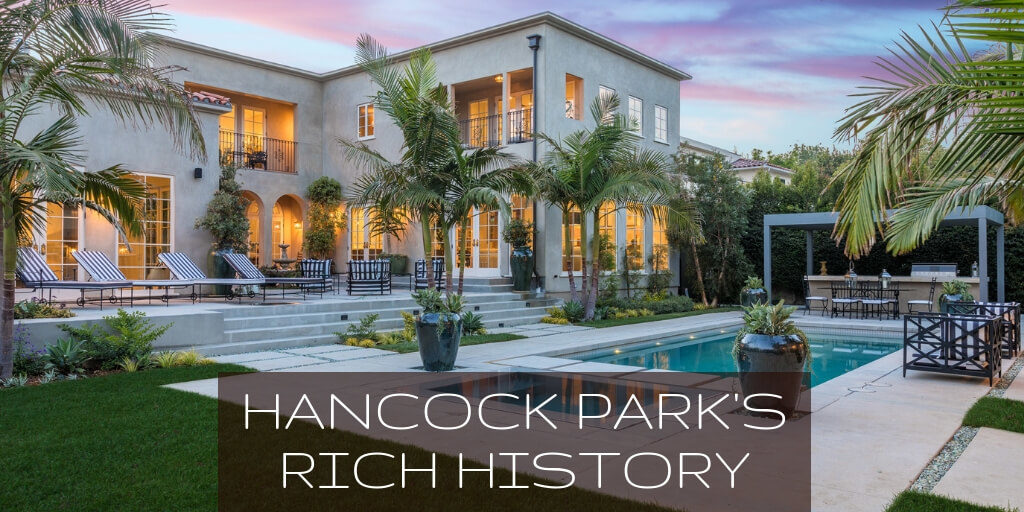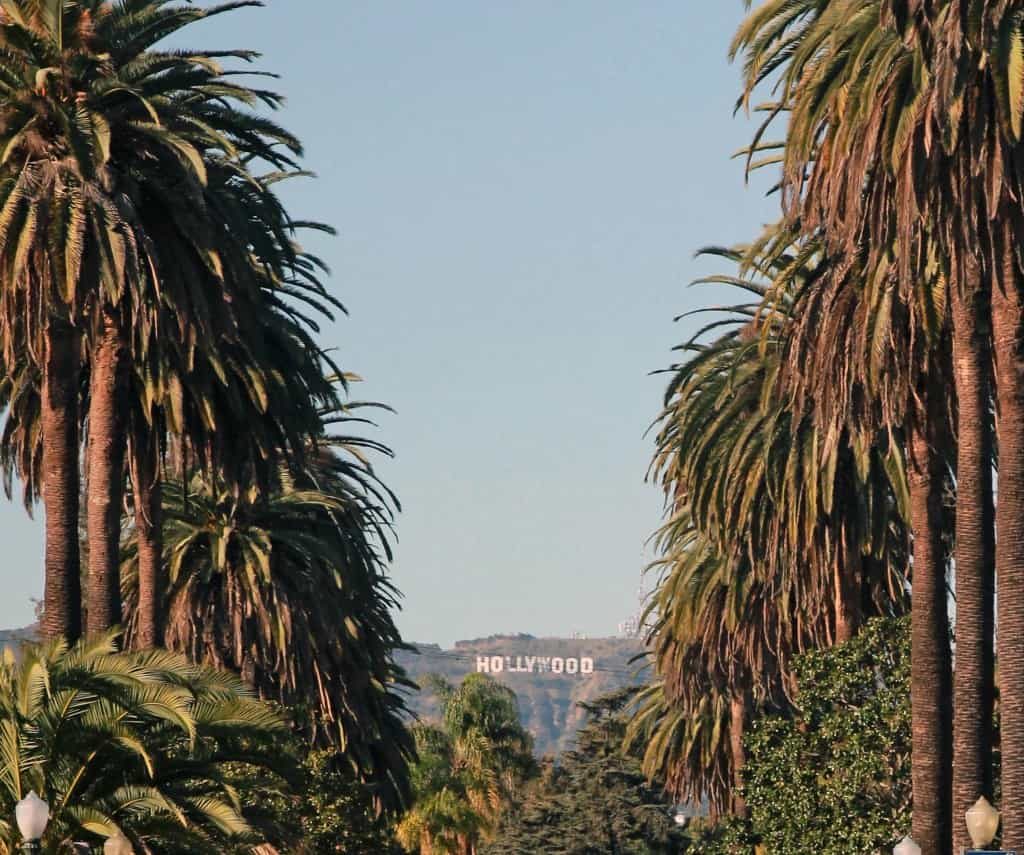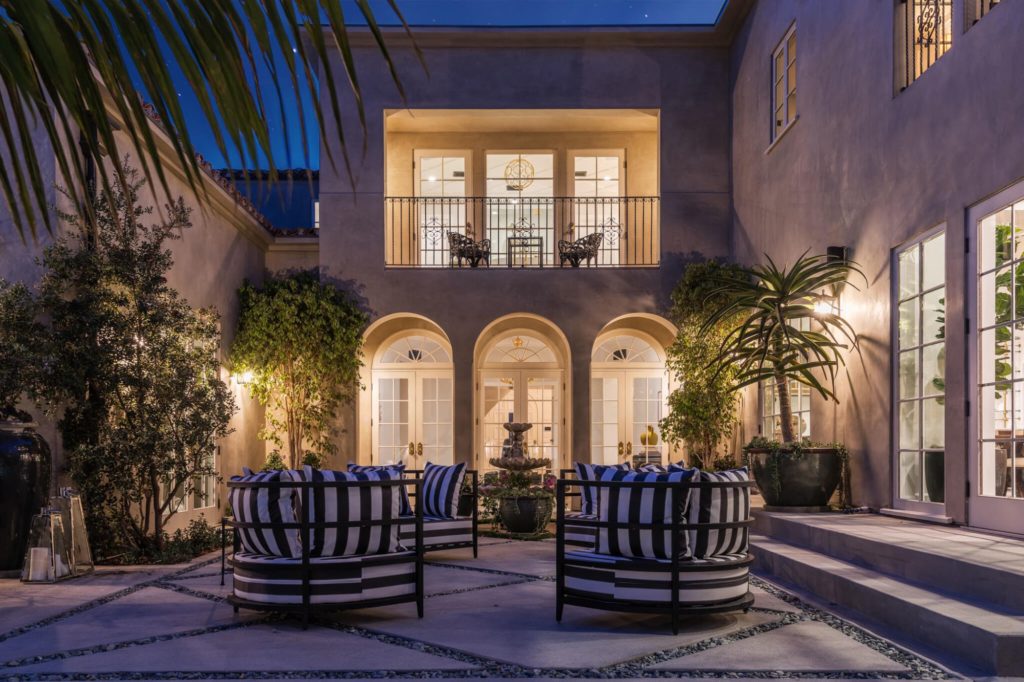Hancock Park’s Rich History

The Hancock Park neighborhood feels like an oasis in the middle of busy Los Angeles. Despite its central location, just south of Hollywood and a twenty minute drive eastward to downtown, the neighborhood doesn’t feel urban. Instead, it’s filled with beautiful, historic homes, sprawling grassy lawns, plenty of shade trees, and wide, quiet streets.
This didn’t happen by accident. Dip a toe in the neighborhood’s rich history, and you’ll discover that there were powerful players that created Hancock Park by design, shaping it into the desirable area it is today.
Read on to learn about the 4 most important moments in the history of Hancock Park.
The Spanish Governor of the Californias discovers the La Brea Tar Pits in 1769

Gaspar de Portola organized an expedition into what is now central Los Angeles, circa 1769. There, a Spanish friar recorded the first known written record of the La Brea Tar Pits, sparking an interest in the land.
Later, in 1828, hundreds of acres of the area, including modern day Hancock Park, were given to settlers in a Mexican Land Grant. The purpose of the grant was to establish a new village, and the members of the new pueblo would use the tar from the tar pits to make asphalt for personal use. Thus, the first development of Hancock Park began.
George Allan Hancock realizes his oil wells have dried up

George Hancock, the neighborhood’s namesake, is arguably the most important person in its history.
By the early 1900s, the land of the Mexican Land Grant, then known as Rancho La Brea, had landed in the possession of George Allan Hancock’s family. Fortune found the Hancock family when oil was discovered beneath the land, and George founded the Rancho La Brea Oil Company. His wealth was such that he was the second person in Los Angeles to purchase an automobile. He also became a philanthropist and patron of the arts and sciences, donating a portion of the land in 1916 to the County of Los Angeles, with a clear stipulation that the fossils found in the tar pits be excavated and preserved.
By 1920, however, the oil wells on Rancho La Brea had dried up. A savvy businessman, Hancock made the pivotal decision to package the land into lots and sell them to prospective home buyers and developers, including leasing 105 acres to the Wilshire Country Club, around which Hancock Park is still situated today.
Hancock’s strong vision for his land once again proved to be invaluable. In the sale, he created a provision that no house could be built closer than 50 feet to the street, and insisted that the wiring be buried underground. (This is major reason the neighborhood doesn’t have the unsightly telephone wires that much of the rest of the city does!). He sold off the lots for between $10,000 and $17, 500 each. In today’s dollar, the original lot price would be $130,000 to $228,000.
Architects bring their diverse visions to a brand new Hancock Park

Walking down the streets of Hancock Park, you’ll notice that no two houses are the same. In fact, the houses are noticeably diverse, diverging in color, size, and style. This is because the new Hancock Park lots attracted affluent home buyers in the 1920’s, who in turn, brought in some of the most prominent architects of the time to build their homes.
Paul Williams was the first African American architect to join the American Institute of Architects, and he was known for championing individuality in his designs. He believed that each home should reflect the personality of the owner. He designed many of the Spanish Colonial and Mission Revival homes in the neighborhood. One of the homes he designed is known as the Bachman House, as it was commissioned by Walter Bachman, a wealthy executive. The bright white, Spanish-style home is located at 165 South Hudson Avenue.
Wallace Neff was another architect who was commissioned to design Hancock Park homes in the 1920’s. He was known as the inventor of the “California style” home, as well as an architect for some of the time’s biggest stars and wealthiest Americans, like Mary Pickford and King Gillette. One home he designed is known as the Erle M. Leaf home, located at 450 S June Street. This stately mansion features a wide open yard and cozy ivy crawling up its stucco walls. Prince William and Kate Middleton were guests at the house when they visited Los Angeles in 2011.
John Austin rose to prominence during the first half of the 20th century, largely in Los Angeles, helping design the Griffith Observatory and the Los Angeles City Hall. His were some of the first homes of Hancock Park, built in as early as 1902. A wonderful example of his architectural genius is the Victorian home located at 637 South Lucerne Boulevard, commissioned by wealthy merchant Hiram Higgins. Interestingly, like several other of the oldest homes in Hancock Park, this house was originally built in another neighborhood and moved to Hancock Park in 1923.Browse our partner-sponsored Glasses, with a variety of options to suit every taste and budget, available to buy online
Hollywood’s Golden Age stars move into the neighborhood

Before the west side of Los Angeles was developed, the stars of the Golden Age of Hollywood lived in the lush Hancock Park neighborhood during the midcentury. It’s not hard to see why—a location near Hollywood and several movie studios, as well as the gorgeous mansions, made it ideal for stars who wanted convenience and luxury. The celebrities who lived in Hancock Park included the millionaire Howard Hughes, actress Mae West, and jazz pianist Nat King Cole.
Though the epicenter of Hollywood residences eventually moved west, Hancock Park was put forever on the map as a neighborhood fit for the who’s who of American celebrity. In fact, many contemporary celebrities have made the neighborhood their home, like Antonio Banderas and David Schwimmer.
Click Here for more information on this Italian Mediterranean estate we currently have listed in Hancock Park!

Ernie Carswell is one of the most accomplished and respected real estate agents in the industry today. With more than 25 years of experience in the business, Carswell’s extensive roster of satisfied clientele includes the likes of Fortune 500 CEOs, professional entertainers, top studio executives, leading attorneys, government officials, ambassadors, and foreign dignitaries.Carswell is one of the most admired names in luxury real estate and frequently receives accolades for his outstanding work in the press. He has been included in The Hollywood Reporter’s “Hollywood’s Top 25 Real Estate Agents” listing, in Variety’s feature on “Showbiz Real Estate Elite,” Billboard’s coverage of the “Top 15 Real Estate Agents Representing Musicians Today,” and was ranked in the top 100 Agents in the nation by the Wall Street Journal’s Real Trends.


